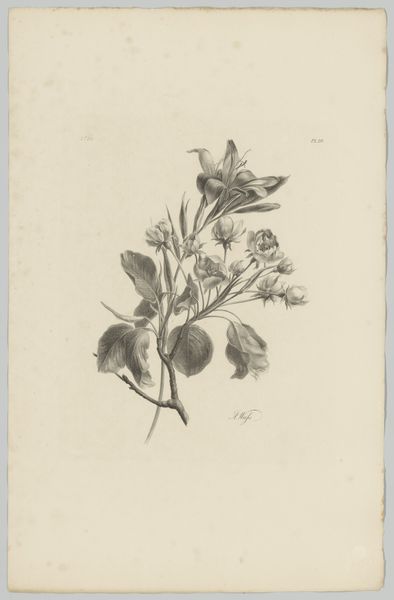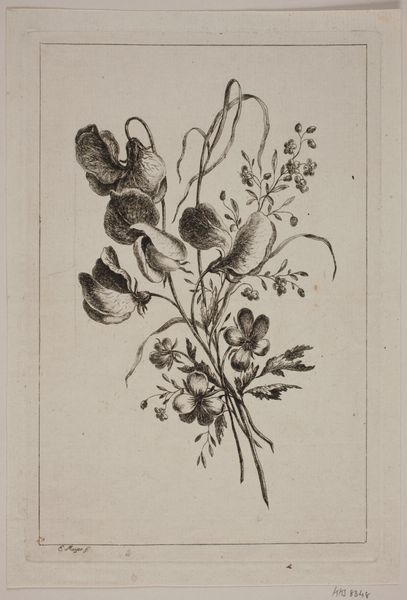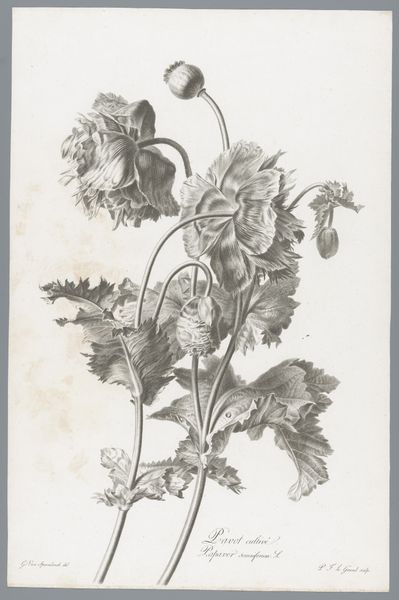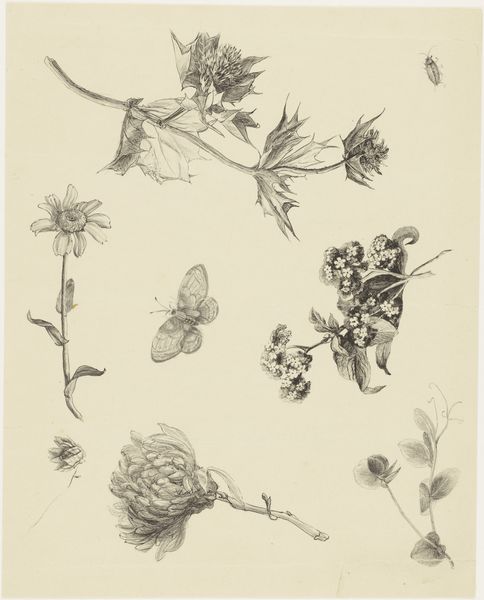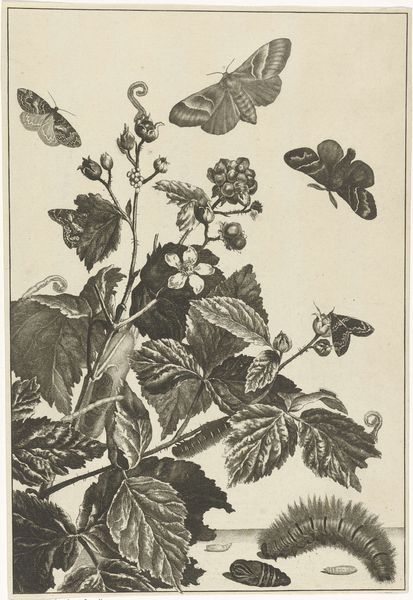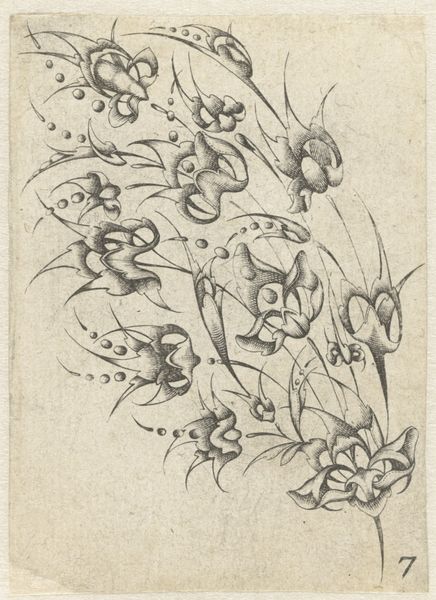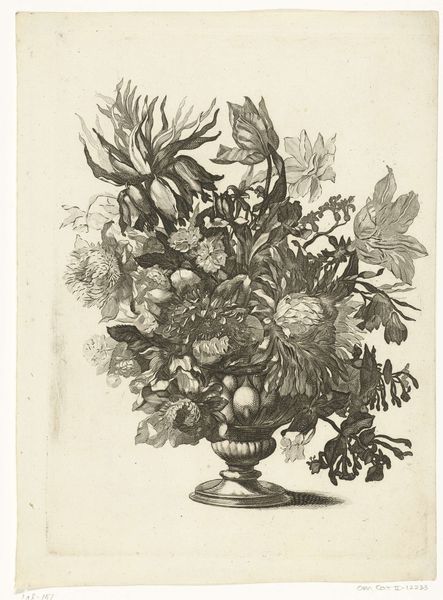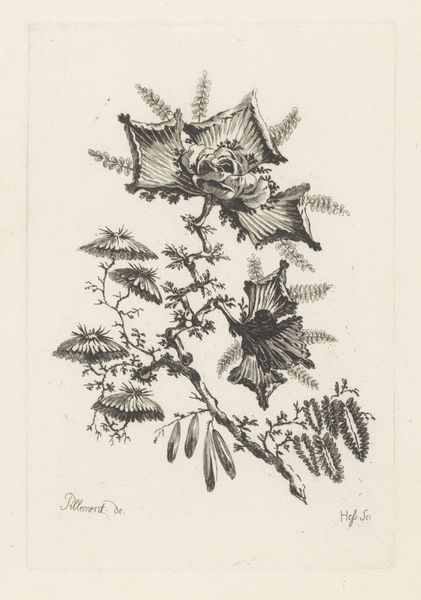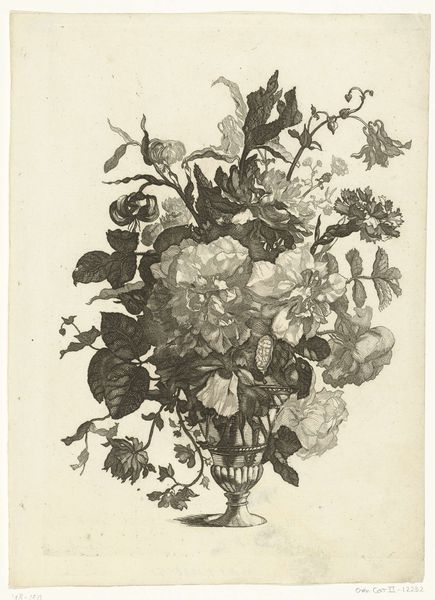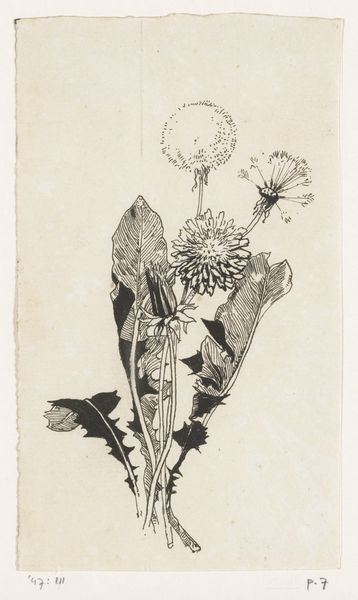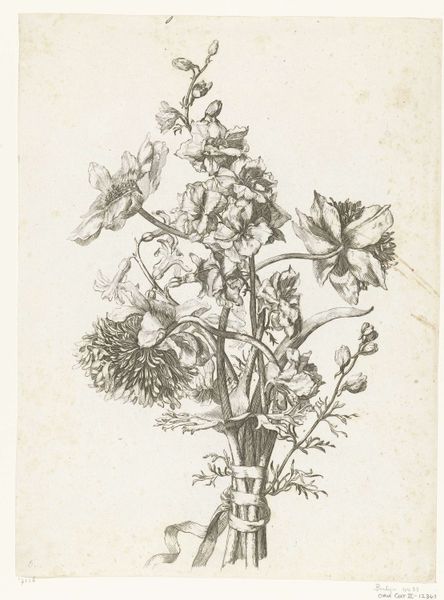
drawing, print, etching, paper, ink, engraving
#
drawing
# print
#
etching
#
paper
#
ink
#
botanical drawing
#
engraving
Dimensions: 15 1/8 x 11 in. (38.42 x 27.94 cm) (sheet)
Copyright: Public Domain
This black chalk drawing called Caterpillars was created by an anonymous artist. The image depicts the life cycle of a butterfly on a plant, from caterpillar to pupa to winged adult. Such close observation of nature, meticulously rendered, flourished in the context of early scientific institutions. Think of the rise of natural history museums and botanical gardens in the 17th and 18th centuries. These organizations fostered a new sense of empirical study, one in which the artist played a key role. This drawing might have been commissioned by a wealthy patron of science. The level of detail suggests that it was intended for study, perhaps as an aid to understanding the natural world. We can appreciate this drawing not only for its aesthetic qualities but also as a document of a specific historical moment. The artist's careful rendering provides insight into the cultural values and scientific interests of the time. As historians, we can look to period sources to understand the importance of this piece as a product of artistic and scientific institutions.
Comments
minneapolisinstituteofart almost 2 years ago
⋮
When Merian returned home from Suriname in 1701 she was suffering from malaria and mental exhaustion after two years of work in South America. She was not able to incise her own copperplates so the prints could be made for Metamorphosis Insectorum Surinamesium, and entrusted this job to a talented team of engravers. They studied the watercolors Merian had completed in Suriname and created intaglio prints using a combination of etching and engraving, such as Caterpillars, Butterflies, and Flower. The images were then hand-colored following Merian's original watercolor. A large group of the original Suriname watercolors are held in the collection of the British Museum in London.
Join the conversation
Join millions of artists and users on Artera today and experience the ultimate creative platform.
